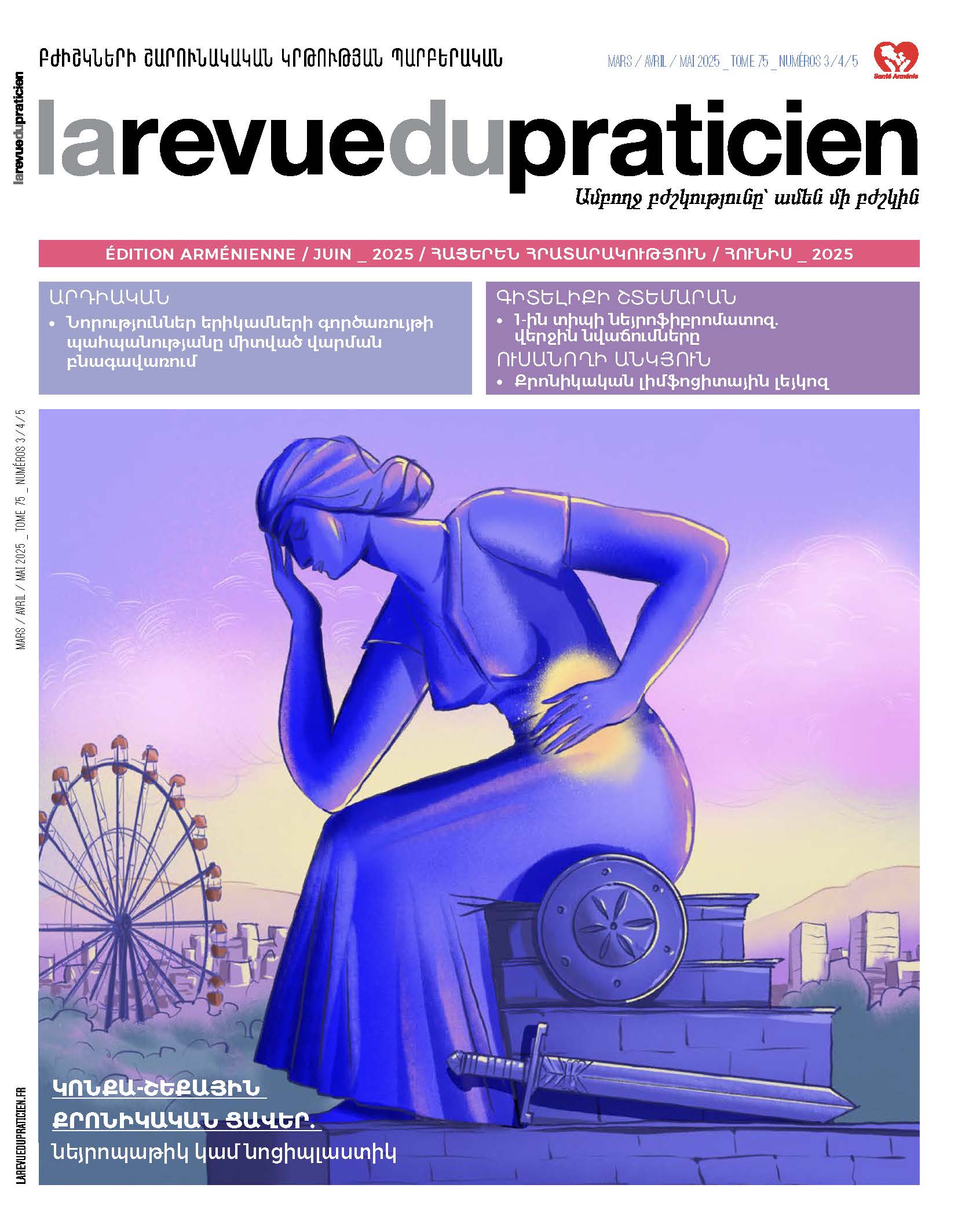Ամփոփագիր
Քրոնիկական պոչուկացավը (կոկցիգոդինիան) բնորոշվում է պոչուկի հատվածում ավելի քան 6 ամիս տևող ցավով, որը սաստկանում է նստած դիրքում և/կամ ոտքի ելնելիս:
Թեև ախտորոշման հիմքում կլինիկական պատկերն է, անհրաժեշտ են լրացուցիչ պատկերային հետազոտություններ (մագնիսա-ռեզոնանսային շերտագրություն [ՄՌՇ] կամ նույնիսկ սցինտիգրաֆիա) բուժելի հիվանդությունների (ինչպիսիք են տվյալ շրջանի ուռուցքները) ախտանշանային ձևեր որոնելու համար: Այս քննությունները երբեմն օգնում են նաև պարզաբանել ցավի համար պատասխանատու ախտաֆիզիոլոգիական մեխանիզմները:
Պոչուկի դինամիկ ռենտգենագրությունը (նստած, կանգնած) էտալոնային հետազոտություն է: Դինամիկ գործողությամբ (ուղիղաղիքային մատնային զննում) պոչուկային ՈՒՁՀ-ն նորարարական այլընտրանք է, որը դեռևս լիովին չի վավերացվել:
Քրոնիկական պոչուկացավի ամենատարածված պատճառներն են գերշարժուն կամ կարծրացած պոչուկը և պոչուկային փուշը (սպիկուլան): Հաճախ բացահայտվում է վնասվածքային կամ հետծննդաբերական ծագում։
Սոցիալական և ցավային հետևանքներն այնպիսին են, որ արդարացնում են բուժօգնության դիմելը. նախ իրականացվում են մանուալ բուժումներ, ապա՝ ինֆիլտրացիա ու, անհրաժեշտության դեպքում, տեղային այլ միջոցների կիրառություն, և, ի վերջո, ամենից կայուն դեպքերի ժամանակ՝ վիրահատություն։
